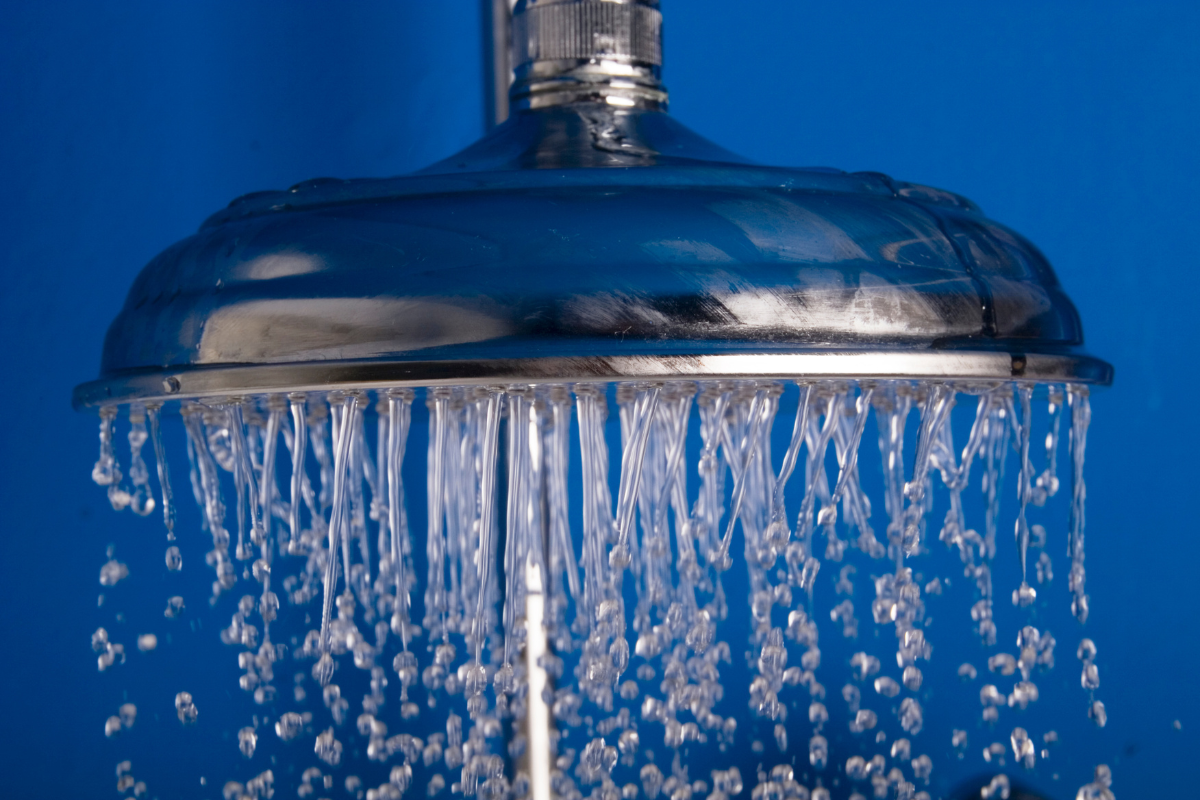 FREE UK DELIVERY.
EXPRESS OPTIONS AVAILABLE
FREE UK DELIVERY.
EXPRESS OPTIONS AVAILABLE

How to Increase Water Pressure in Shower: 7 Tips for UK Homes
|
|
Time to read 7 min
 FREE UK DELIVERY.
EXPRESS OPTIONS AVAILABLE
FREE UK DELIVERY.
EXPRESS OPTIONS AVAILABLE
 UP TO 10 YEARS GUARANTEE
FOR PEACE OF MIND
UP TO 10 YEARS GUARANTEE
FOR PEACE OF MIND
 30 DAY RETURNS
NO QUIBBLE GUARANTEE
30 DAY RETURNS
NO QUIBBLE GUARANTEE
|
|
Time to read 7 min
Table of Contents
There’s nothing more frustrating than stepping into the shower expecting a powerful spray, only to be met with a disappointing trickle. Low water pressure is a common issue in UK homes, and while it can feel annoying, there are plenty of ways to tackle it.
In this guide, we’ll show you exactly how to increase water pressure in shower systems, from quick checks you can do yourself to long-term solutions that give you the shower experience you want.
Here are the most effective ways to boost shower performance:
A blocked shower head is one of the easiest fixes. Mineral buildup and mineral deposits can accumulate inside the shower head, obstructing water flow. Remove it, soak it in a descaling solution or vinegar overnight, and scrub away limescale. If it’s old, consider replacing it with a new shower head designed to improve flow.
You can read our guide on the best shower head for low pressure to find the right option for your home or browse our full range of shower heads and arms to see the styles available.
For hose-fed shower systems, a twisted or damaged shower hose can restrict water. A partially closed valve or a kinked shower hose may restrict water flow and reduce pressure. Straightening or replacing it often restores pressure instantly. Keeping hoses clean also helps – see our step-by-step guide on how to clean a shower hose.
If you have a mixer or thermostatic shower valve, it could be restricting flow due to wear or a build-up inside.
Additionally, a partially closed shut off valve can also affect water pressure in your shower. Worn or faulty valves may limit water pressure throughout the shower system. Cleaning, servicing or upgrading the shower valve can make a big difference.
If you’re unsure whether a thermostatic or electric option is right for you, our guide on thermostatic shower vs electric shower explains the differences.
For homes with gravity-fed systems, fitting a shower pump is one of the most effective ways to increase water pressure in shower units. Shower pumps are designed to significantly boost water pressure and improve shower performance. Pumps actively boost the flow, creating a strong, consistent spray.
If you’re considering this upgrade, see our article on how to bleed a shower pump to keep it running properly, or learn more in our guide what is a regenerative shower pump.
Professional installation is recommended for shower pump installation, as a break tank is often required to ensure safe operation. Both water pumps and shower pumps can be used to boost water pressure, and having a shower pump installed can result in improved water pressure throughout your home.
If your home suffers from low water pressure, upgrading to a power shower can make a big difference. Power showers are designed for gravity-fed systems and use a built-in pump to mix hot and cold water while boosting the flow, giving you a stronger spray.
For homes with combi boilers or unvented systems, water pressure is usually much stronger. These systems provide a high, consistent flow of hot water, so a separate pump isn’t normally needed. Modern unvented and pressurised cylinders are also effective at maintaining good pressure and are fitted by professional installers.
Electric showers work differently, heating cold mains water on demand. They can provide steady performance, but flow rate depends on your mains supply. For more guidance, see our articles on why is my electric shower cold and how much to replace an electric shower.
If possible, try not to run appliances or multiple taps while showering. High water usage and water consumption from multiple appliances can reduce shower pressure. Staggering water use around the home can keep pressure more consistent.
Installing a water saving shower head can help conserve water and lower water bills, though they may slightly reduce pressure. Water saving features are designed to balance water saving with adequate shower performance.
If your entire home has low mains pressure, contact your supplier. Your supplier can test the supply and, if necessary, make adjustments or offer advice. They can check if you have low or high pressure and explain that one bar is the force needed to lift water to a height of 10 metres. Understanding the force needed for proper shower operation can help you discuss solutions with your supplier.
Before making any changes, it's helpful to measure the flow rate of your shower. You can do this easily with a measuring jug and a timer, simply see how long it takes to fill a 1-litre measuring jug from your shower or tap.
This simple test helps you determine if the pressure in your shower is low. Keep in mind that various factors, such as distance from the water source, local geography, and water demand from neighbours, can all affect the pressure in your shower.
Understanding your flow rate will help you diagnose the issue and choose the right solution to improve your shower experience.
Before fixing the problem, it helps to understand why it happens. Common causes in the UK include:
Gravity fed system: Older homes often have a cold water tank in the loft feeding the shower. This type of water system typically results in lower water pressure and low shower pressure due to the limited height difference between the tank and shower head, which can significantly affect water pressure and shower water pressure.
Old or original plumbing system: Ageing or corroded pipes, especially iron piping found in the original plumbing system of older properties, can limit water pressure and affect a shower's water pressure. Replacing old or corroded pipes and upgrading plumbing lines can make a significant difference in your shower's water pressure and overall performance.
Issues in the plumbing system or plumbing lines: Leaks, blockages, or undersized plumbing lines within the plumbing system can cause low shower pressure and lower water pressure throughout the home.
Clogged shower head: Limescale build-up or trapped debris reduces water flow and can affect water pressure at the shower.
Faulty shower valve or mixer: Worn parts may restrict pressure in my shower.
Household demand: Running taps, washing machines or dishwashers at the same time can reduce pressure and affect water systems.
Mains water supply issues: Sometimes the pressure problem is outside your home, caused by the mains supply itself.
Different water systems, such as gravity fed, mains fed, and unvented, each have unique impacts on pressure in my shower and overall water flow. Upgrading to modern water systems can make a significant difference in your shower's water pressure and performance.
Once you’ve learnt how to increase water pressure in shower systems, regular maintenance will help prevent issues from coming back. Simple habits include:
Descale shower heads every month in hard water areas. Regular cleaning helps prevent mineral deposits and mineral buildup, which can clog the shower head and restrict water flow.
Check hoses and connections during your regular bathroom clean.
Replace worn parts promptly to avoid gradual pressure loss.
Check for flow restrictors in your shower head, as these can limit water flow. If necessary, remove the flow restrictor or consider upgrading to a new shower head designed for better pressure.
Consider upgrading fittings if your system is outdated.
If you’ve tried the easy fixes and your shower is still struggling, it’s worth calling a plumber. Professional installation by a plumber installing new components, such as a shower pump or new shower head, can resolve complex issues that DIY fixes can't address.
Low pressure can sometimes be linked to hidden leaks, faulty pipework, outdated plumbing systems, or problems within your shower system. A professional can assess your entire shower system for hidden problems, identify the cause, and recommend the best long-term solution.
A weak shower doesn’t have to be a daily frustration. With the right fixes — from cleaning a clogged shower head to upgrading your system — you can enjoy a strong, refreshing flow every time. Regular maintenance and smart choices will keep your bathroom working just as it should.
At House of ENKI, we believe your shower should be reliable, stylish, and built to last. Our collection of premium showers offers high-quality designs to suit both modern and traditional bathrooms, giving you performance you can count on.
Explore the House of ENKI range today and find the perfect upgrade for your bathroom.



